What's the Best SUP Size for You?
You've made the call! It's time to get a sweet new paddle board but with so many options, how do you decide what SUP size is best for you? Don't worry, we're not about to head to the chalk board for this one. Like their riders, SUPs come in all shapes and sizes but that just means there are lots of great choices for all the different ways you like to paddle.
This post builds on our shapes discussion and zeros in on what SUP size is the best match for you; think of it as a SUP board size guide. For a refresh on the differences in board shapes - between all-around, touring, and yoga boards - check out "How to Choose the Best SUP Shape for You". If you're ready to dive into board sizes, read on!
What to consider when deciding what SUP size is best for you
When it comes to choosing what SUP size you need there are a few things you as the future paddler should think about. They are:

Just follow the guide below to find a board that's a great match for you and your skill level.
Buoyancy
We'll start with buoyancy or 'the ability or tendency of something to float in water'. Your board's buoyancy, sometimes referred to as 'flotation,' needs to compensate for any weight you place on it. The buoyancy of your SUP is determined by the volume of air it holds. The bigger the board, the more buoyant it'll be.
Just like a boat, as you load up your SUP, it will sit deeper in the water. Being settled in the water makes your board feel more stable but it also makes paddling less efficient. If the board is overloaded and you're sitting too deep, you'll struggle to get going and maintain your glide. By contrast, sitting too high on the water on a board with too much volume isn't ideal either. You'll feel less stable and pushed around by the wind.
Carrying Capacity
You'll want to make sure your board is rated to hold whatever payload you're paddling with. Payload or carrying capacity is who and what is on the board. To account for your total payload you'll want to add your body weight, the weight of your dog 🐶 or paddle partner 👯♀️, and the weight of any gear you're bringing along. Check out the specs in the table below to see each board's suggested maximum capacity. That's the total recommended weight to carry on top of the board for the best performance.
Board Thickness
All of our full-sized SUPs (made for adult paddlers) are six inches thick. These thick rails are designed to provide great stability. At their maximum recommended capacity, all of our boards sit about three inches deep (or halfway) into the water. Sitting one to three inches into the water is ideal for beginners as a larger board offers more stability. More experienced paddlers may prefer to sit a bit deeper in the water to perform more aggressive maneuvers or remain at the halfway point for better glide and paddle efficiency.
Most boards are designed to hold one rider and a child or pet, but if you're planning to paddle with a partner much of the time, the Max Multi-Purpose SUP is specifically designed with multiple riders or heavy payloads in mind.

Check the specs to make sure you get what suits you and your gear.
Considering Your Typical Payload
When you're thinking about what size SUP is best for you, remember that total weight includes you and whatever else you're bringing along. For a recreational afternoon paddle, there's typically not much extra payload besides your bodyweight to plan for. Most of the time you'll be carrying a water bottle, a light snack or piece of fruit, along with your wallet, keys, and phone in your deck bag, as well as a pfd and a pair of sandals. That usually adds up to 20 pounds or less.
However, if you're planning to carry more than that on a regular basis, factor it into the size of SUP you choose. If you'll be paddling with another person, a furry friend, a full ice chest you can sit on, or lots of camping gear for overnight trips, it's a good idea to choose a larger-sized board. You'll notice your board's performance changes as you add gear. Look for a wider board with higher buoyancy/volume to give yourself greater stability.
Just remember; while you can go beyond the recommended capacity of your board, you'll notice it takes more skill to maneuver. So, if you're looking for high performance and an efficient and smooth glide, it's best to travel light and not weigh your board down.
Stability
Once you've thought about the weight of your gear and the volume or buoyancy of your board, it's time to consider stability. Stability depends on the shape of the board (especially the width), your skill level, and balance. Simply put, board width is a tradeoff between stability and performance. Extra surface area on the water makes you more stable, but it also creates more drag which slows you down. Narrower boards have less surface area and offer more responsiveness. It's good advice to choose stability over performance as a beginner but, as always, it comes down to how you'll use your board.
Casual paddlers who will be taking their boards out less frequently (1-3 times per month) tend to progress more slowly. Those that will be paddling more frequently or very frequently (4-5 times per week) can afford to take on a more challenging board shape to start and bring their skill level up to meet it's demands.

Getting the right SUP size will increase your performance (bigger doesn't always equal better).
Maneuverability
In addition to the board's width, it's also important to choose an appropriate length. Longer boards have a more efficient glide, whereas shorter boards are more responsive and maneuverable. Boards that are nine feet long or less tend to be considered surf-inspired boards. Those in the nine to eleven foot range are recreational type boards. Boards above eleven feet are typically for touring, racing, or multiple riders. Shorter boards, with less length ahead of your front foot, are easier to pivot. This allows you to make tighter, faster turns.
Longer boards give you increased stability, buoyancy, and paddle efficiency. They're better for traveling long distances. In general terms, the bigger you are relative to your board, the easier it'll be to muscle around. The smaller you are relative to your board, the more stable of a platform it will be. That's why SUP surfboards are short and have a lower recommended capacity, whereas yoga boards are wide and have a high capacity.

The size of your SUP affects your turning radius.
Paddle Surf Positioning
If you're familiar with surfing, you'll have seen skilled longboarders walk up and down the length of their boards on a wave. Longboards are large, buoyant, and relatively stable to walk on. On shortboards, surfers need to stay centered at all times. They have to adjust the position of their feet in an instant or they'll fall. However, shortboards can turn sharply and cut back and forth across the face of the wave in ways that longboards simply can't.
Paddleboards that are designed for competitive surfing are not very buoyant or very stable until they get moving down the face of a wave. In fact, it can be pretty awkward to stand up and paddle out into the lineup, even for the pros. Once they catch a wave, however, that extra speed makes them more buoyant so they can carve tight turns while moving fast.

Ready to paddle out with the all-new Max Multi-Purpose SUP, designed to carry extra riders and gear.
Portability
Another major factor to consider when choosing what SUP size is right for you is how you plan to transport and store it. In other words, its portability. To be able to have fun with your paddle board, it has to fit into your life!
Luckily, one of the top features of inflatable stand up paddle boards (iSUPs) is that they can be deflated, rolled up, and stored. Your SUP bag is typically small enough to fly with as it's about the same size as a large suitcase. This makes it FAR easier to transport than a rigid or hard SUP which usually require a roof rack or large vehicle like a van or pickup to transport. Thurso Surf's 2019 iSUP lineup comes with our best board bag yet. It's got cushy shoulder pads, a padded hip belt, and wheels so you can easily take the Roller Backpack wherever your paddling takes you.

Heading down to the water for a paddle is easy with our wheeled Roller Backpack (included with every full-sized SUP package).
Got questions? Feel free to ask!
Hit us up with questions anytime Experience is the best guide and we're great at helping you determine what board size and shape are best for the conditions and types of paddling you'll be doing.
Tag #thursosurf on social to share your adventures and be featured on our accounts or in the newsletter!



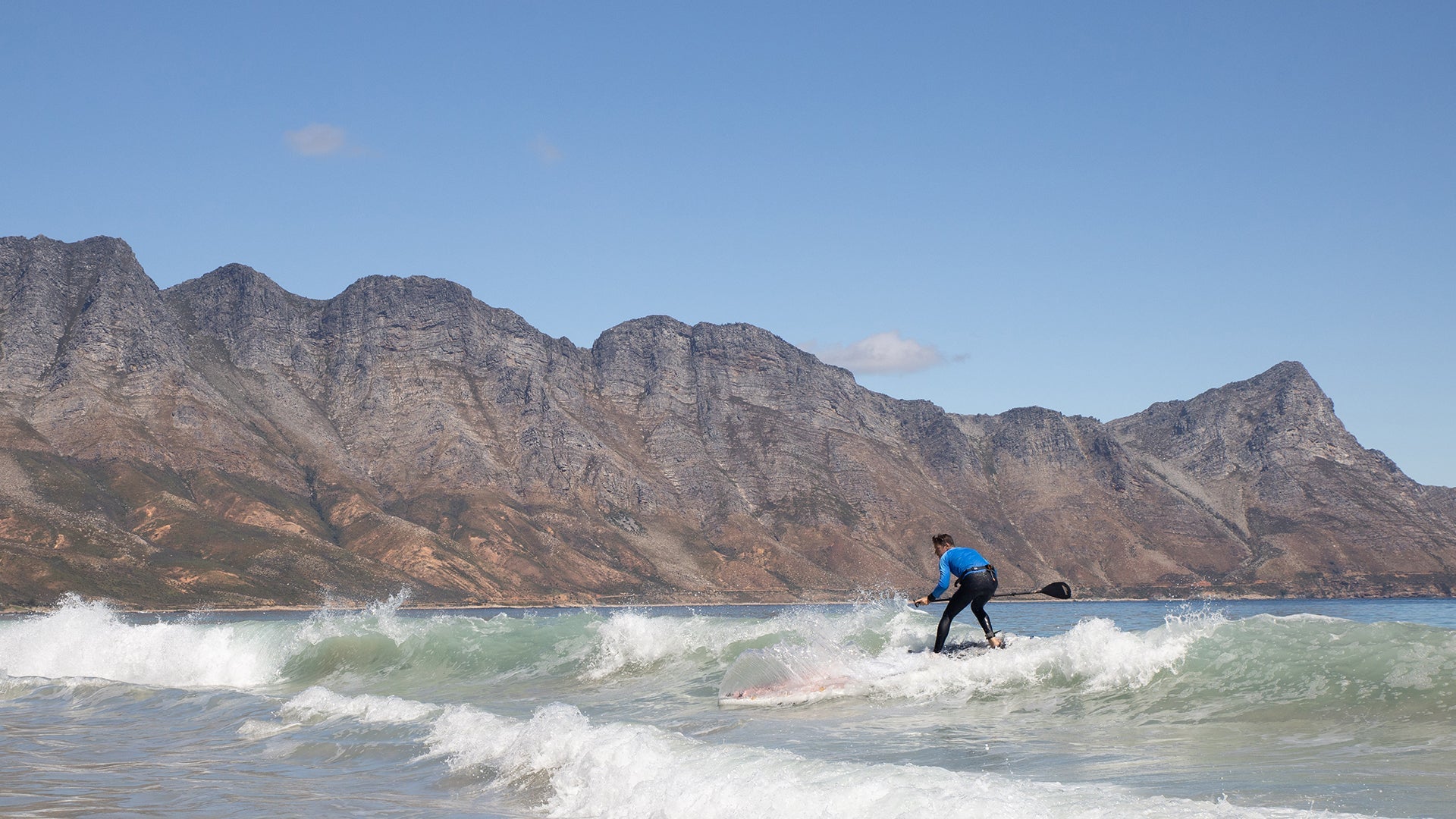
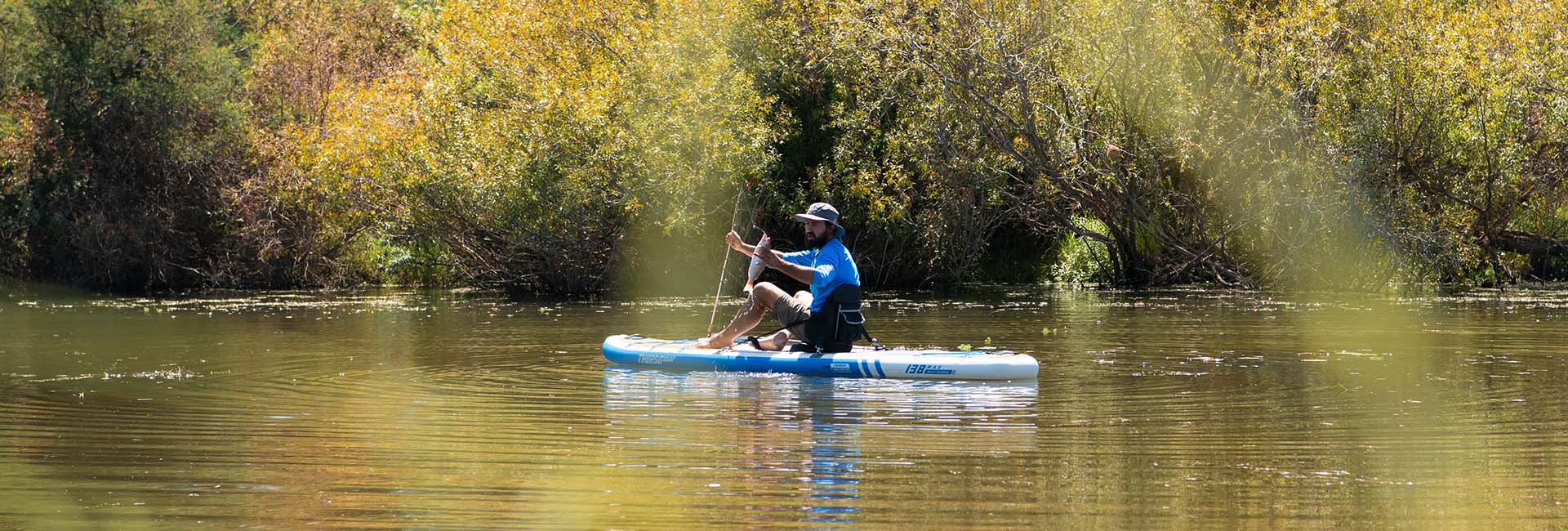
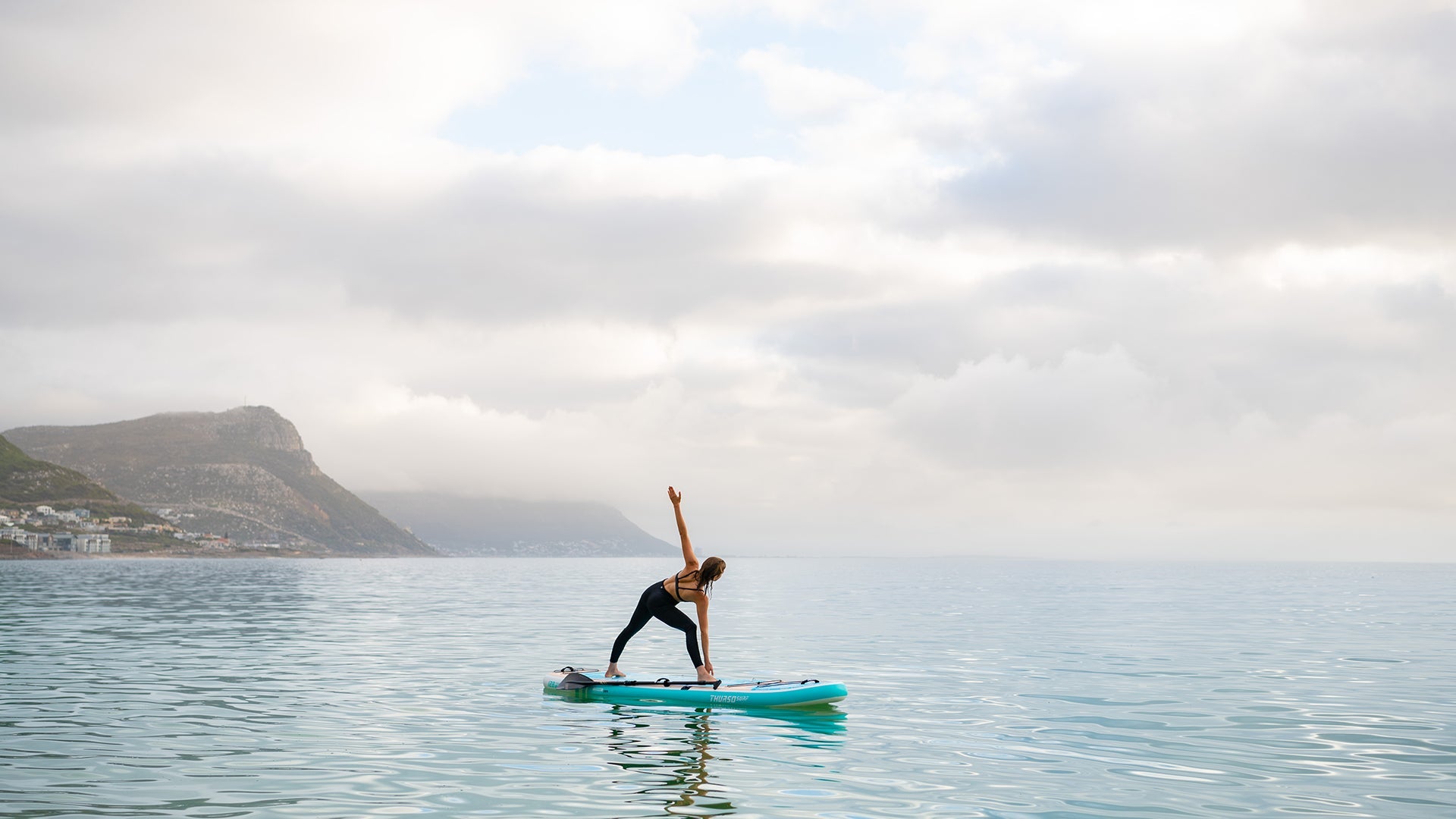
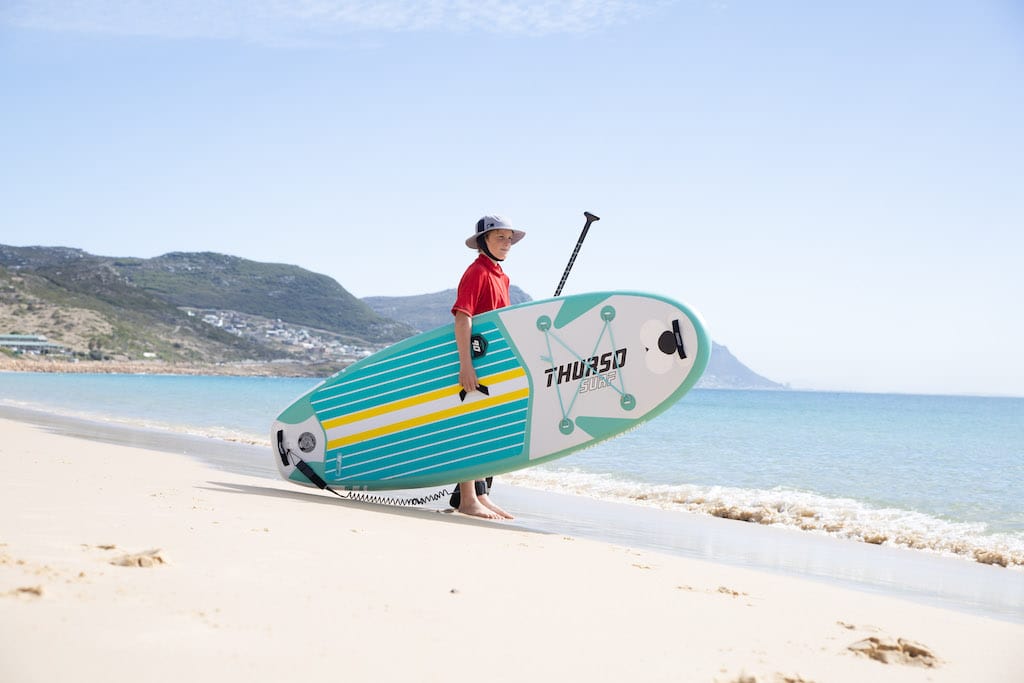
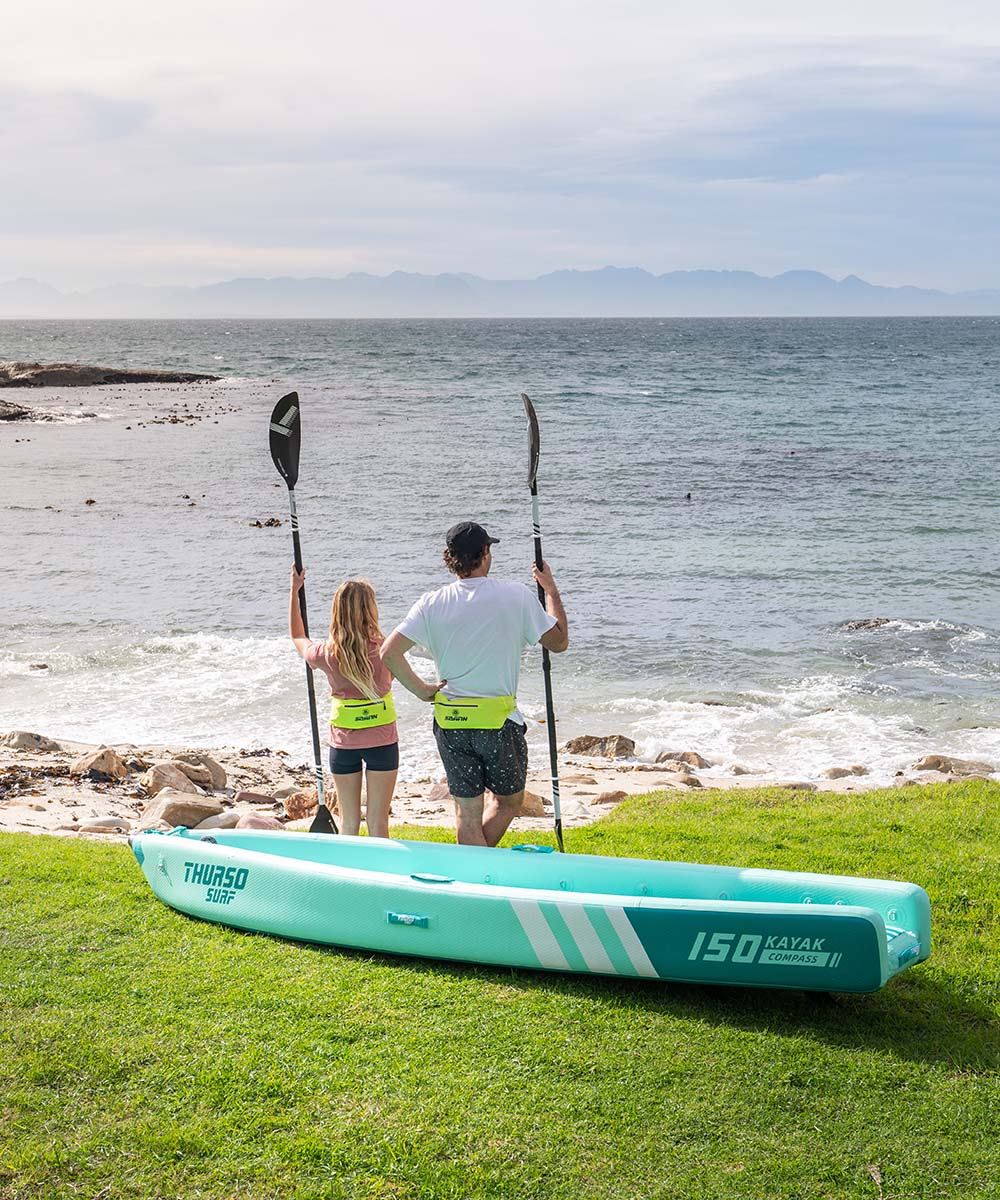
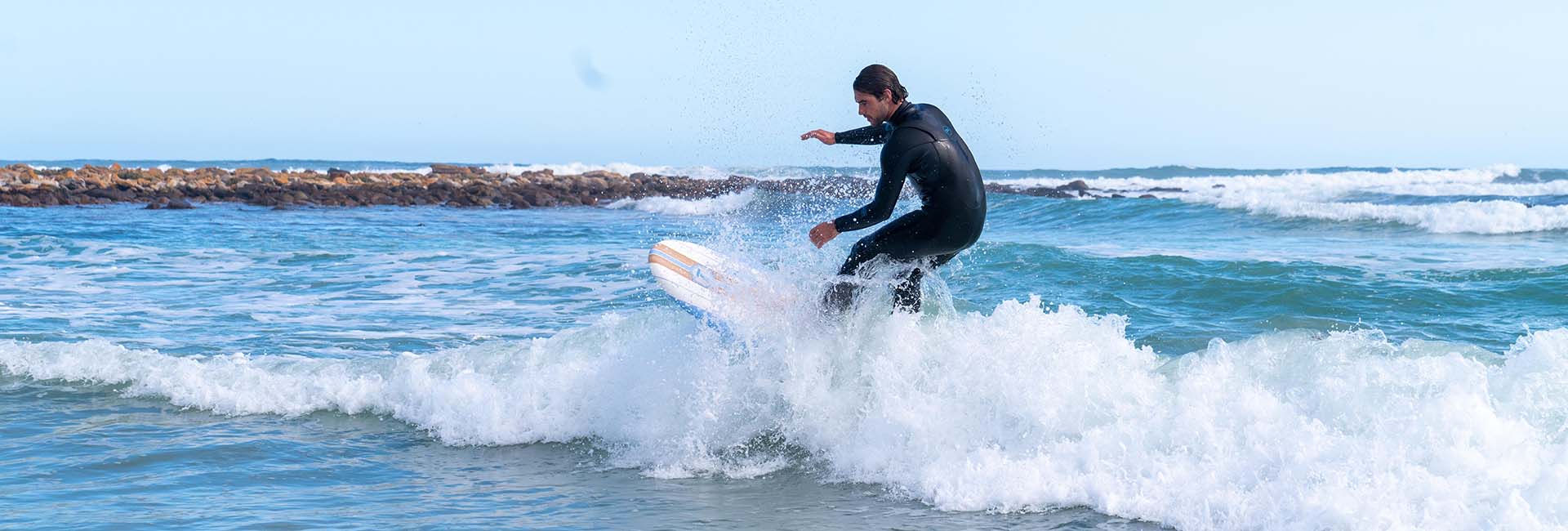
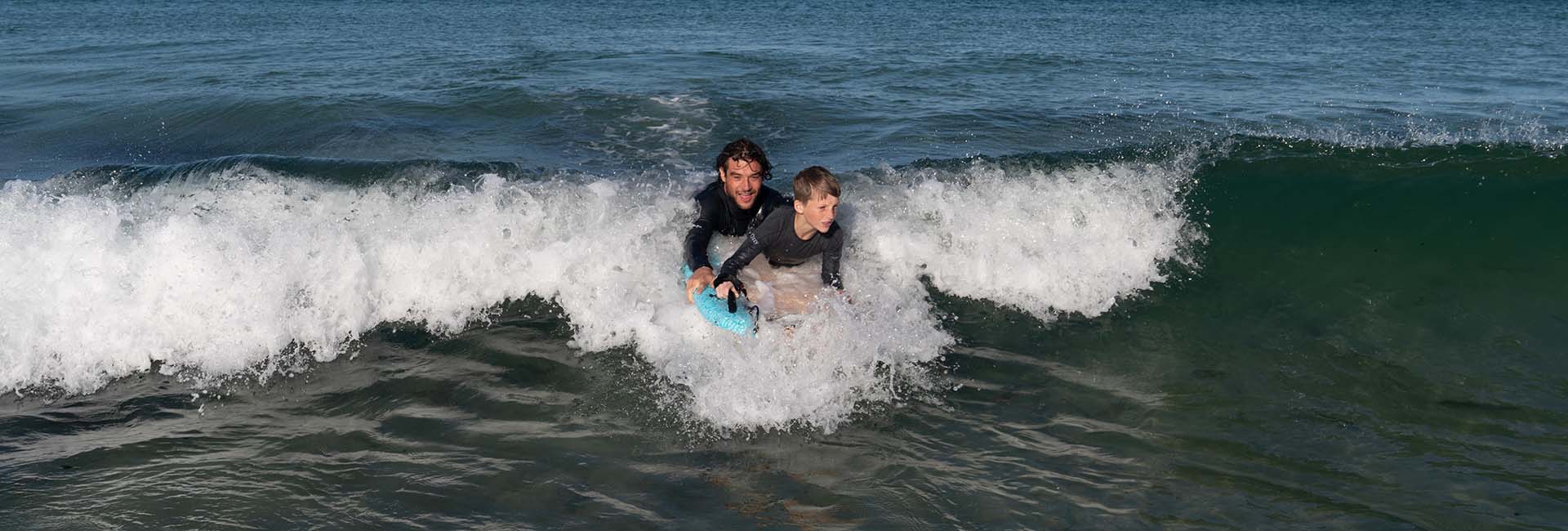


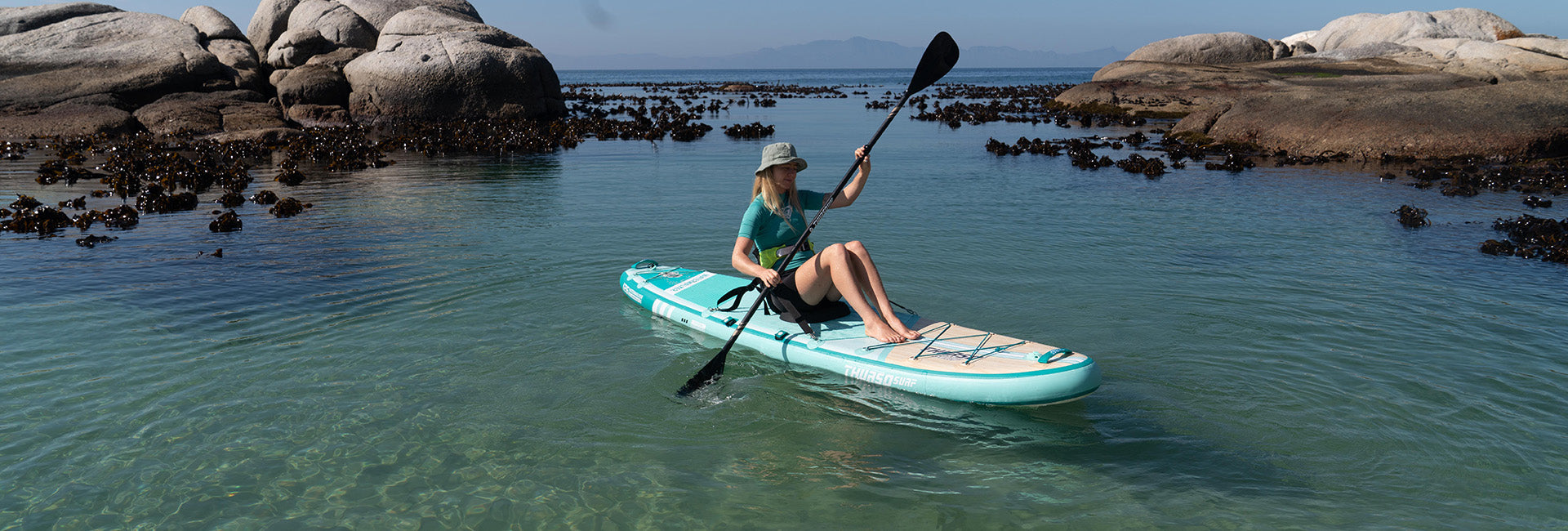
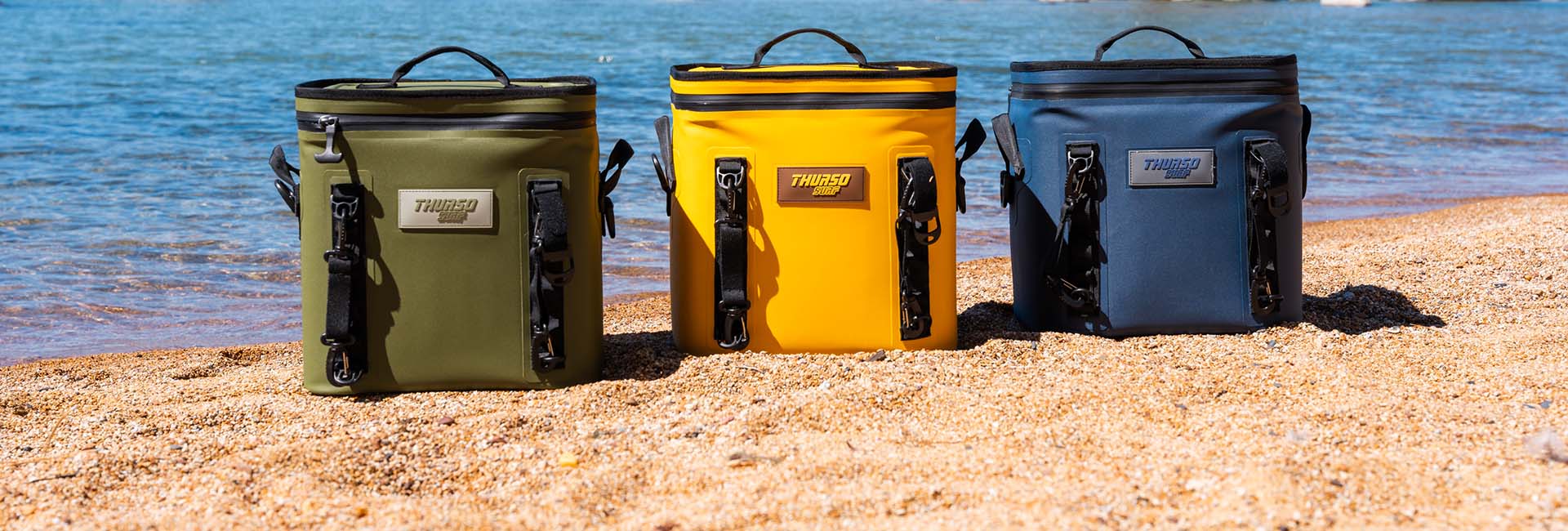
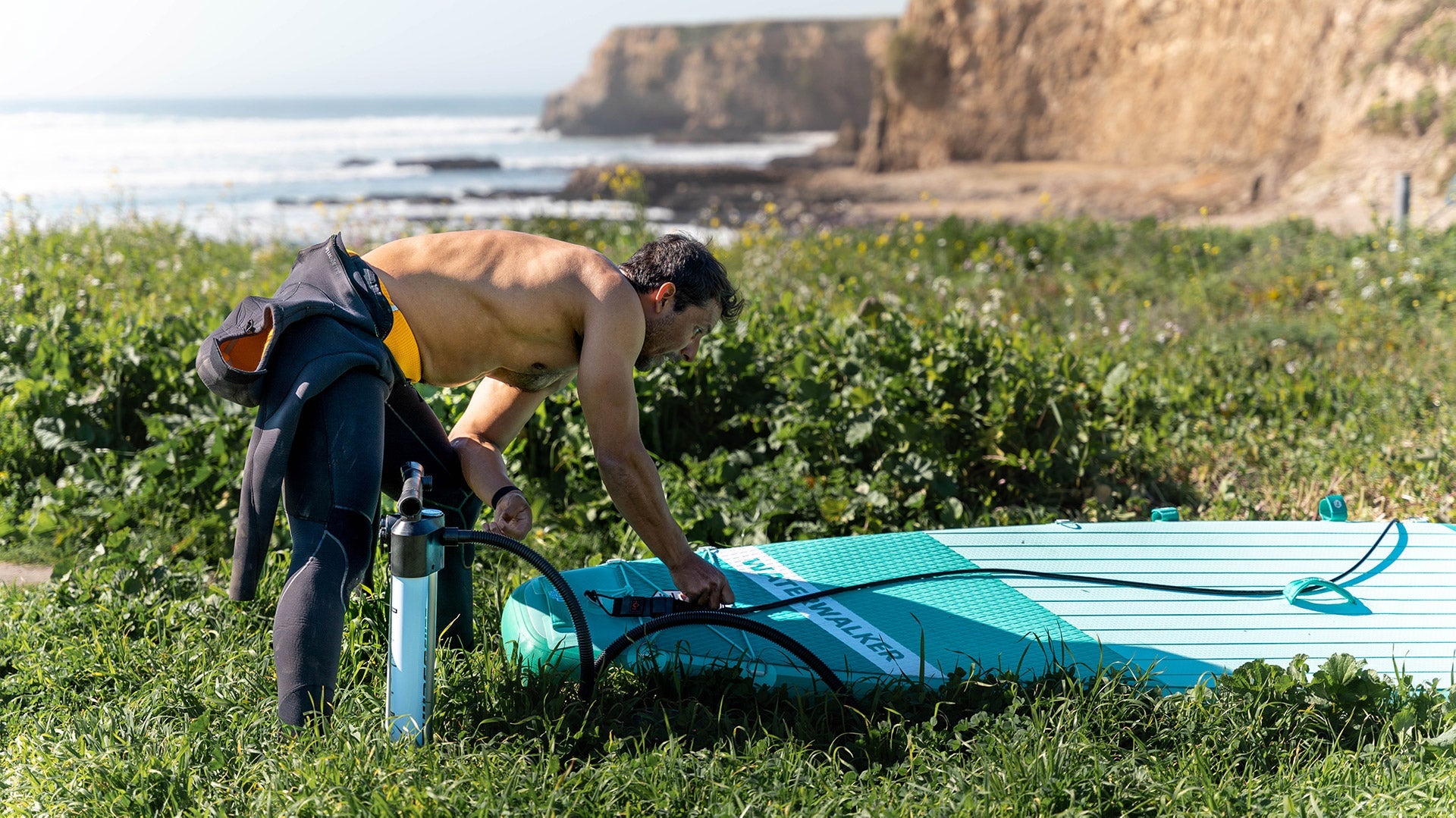
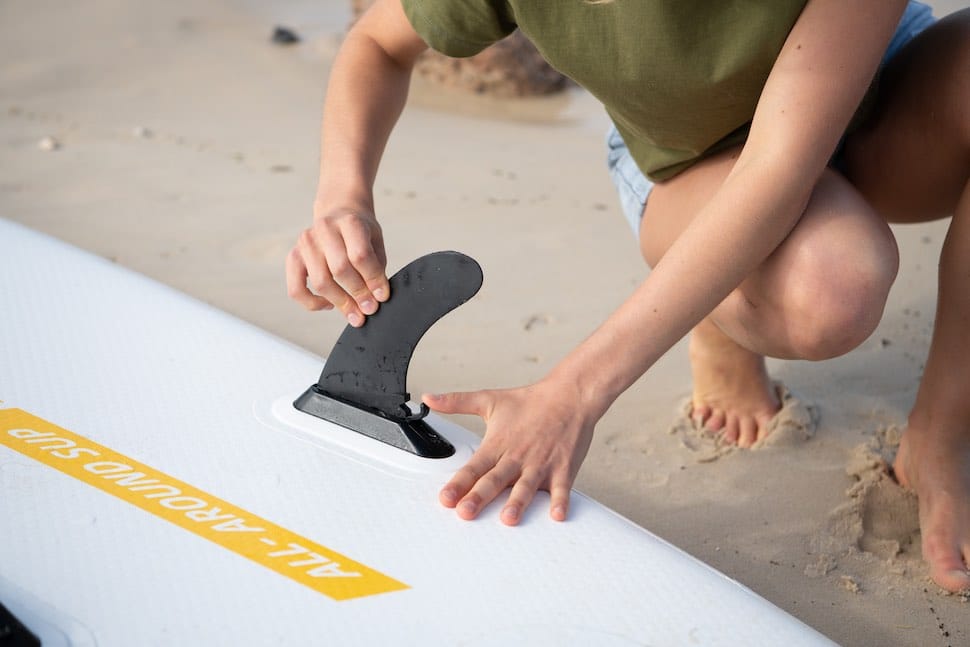




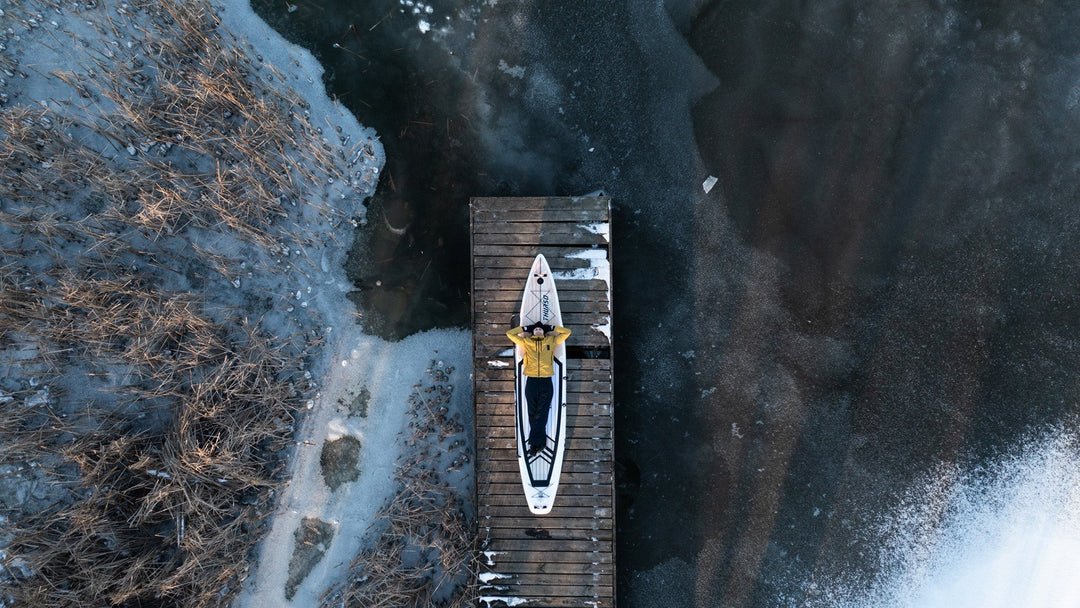
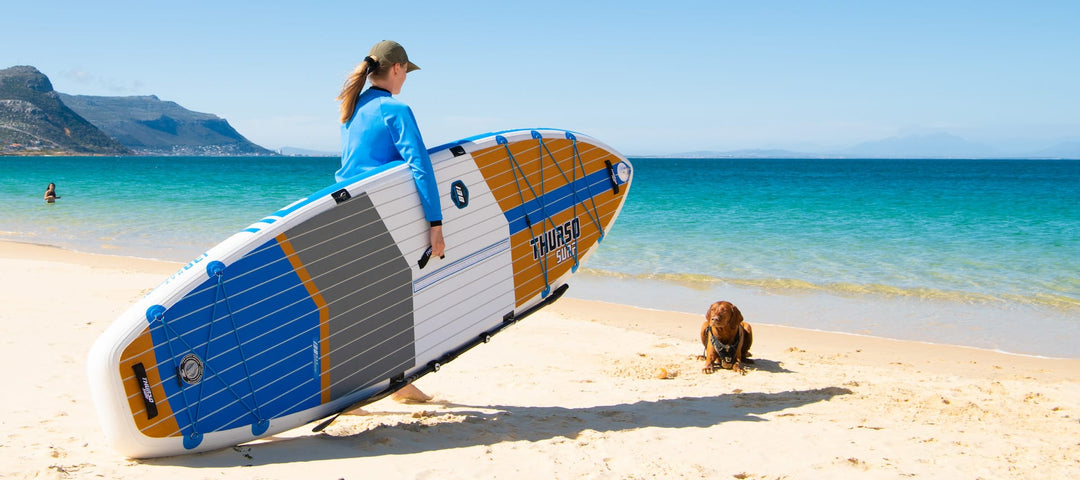
Leave a comment